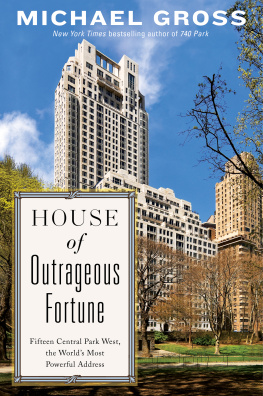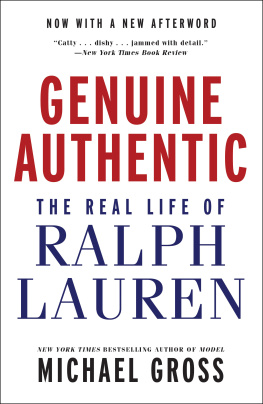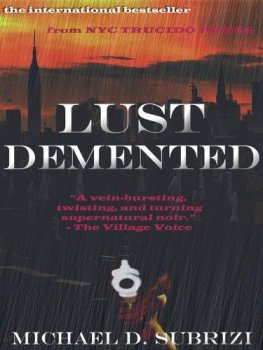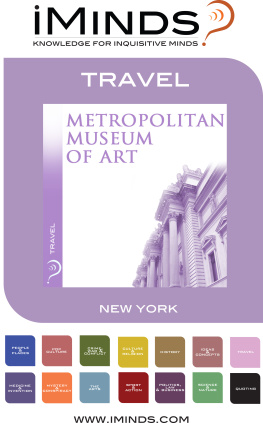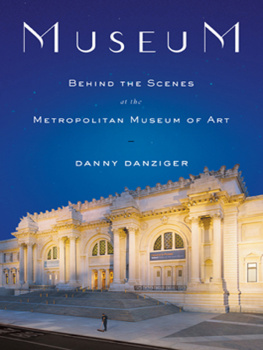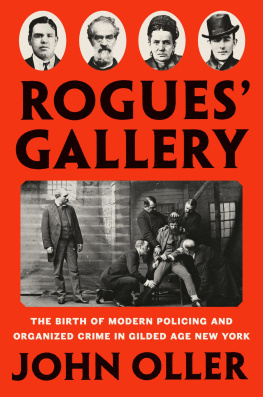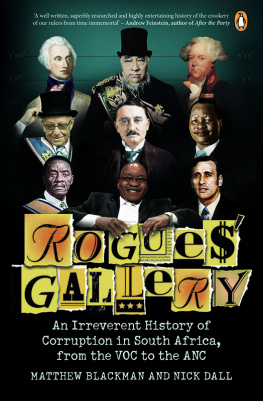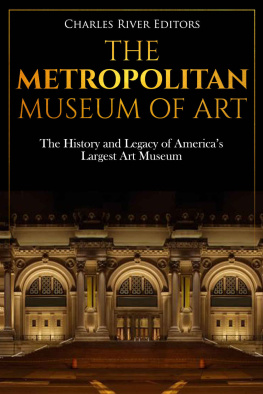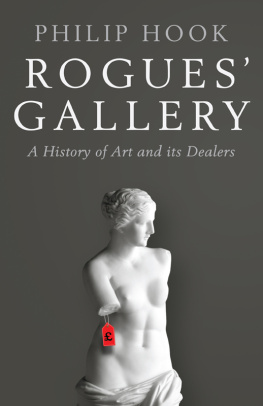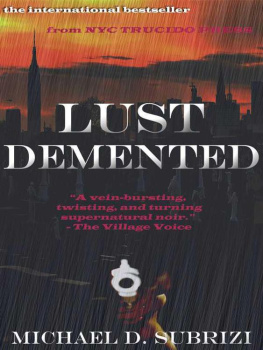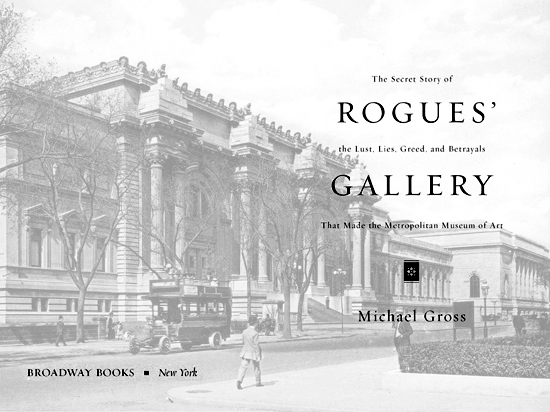Introduction
O N A CHILLY WINTER DAY, EARLY IN 2006 , I SAT IN THE OFFICE of Philippe de Montebello, then director of the Metropolitan Museum of Art (he would announce his retirement two years later). Montebello is generally considered, even by his most fervent admirers, a little arrogant, a touch on the pompous side, and his mid-Atlantic Voice of God (well-known from his Acoustiguide tours of exhibitions) does nothing to dispel the impression of a healthy self-regard. So I was nervous; I was there to discuss my plan to write an unauthorized book about the museum and to ask for his support, or at least his neutrality.
He wasnt happy to see me.
My brief conversation with the museum administration, then racing to an abrupt conclusion, had actually begun in the fall of 2005, when I called Harold Holzer, the senior vice president for external affairs, and told him my plans. His reaction was quick and negative.
Nobody here is ever of a mind to cooperate with an author, he said. The only kind of books we find even vaguely palatable are those we control. Nonetheless, the museum had just broken precedent to cooperate with another author writing about the museum. It was vaguely palatable because it was a controlled entity. Once it was published, Id see there was no point in my writing another. If we tell you we wont cooperate, will you go away?
Until now, there have been only two kinds of books on the museum. Some have had agendas, whether personal (the former Met director Thomas Hovings memoir, Making the Mummies Dance, was a score-settling romp; John L. Hess covered Hoving as a journalist for the New York Times, came to hate him, and explained why in The Grand Acquisitors) or political (Debora Silverman disdained the upper classes of the 1980s, the way they disregarded history and merchandised high culture, and explained why in Selling Culture: Bloomingdales, Diana Vreeland, and the New Aristocracy of Taste in Reagans America).
The other kind of Met book was commissioned, authorized, published, or otherwise sanctioned by the museum. The first among those, appearing in two volumes in 1913 and 1946, was by Winifred E. Howe, the museums publications editor and in-house historian. They are, to be kind, dutiful. Two later, somewhat juicier histories were commissioned by Hoving and published to coincide with the museums 1970 centennial, one a coffee-table book called The Museum by the late Cond Nast magazine writer Leo Lerman, the other, Merchants and Masterpieces, a narrative history by Calvin Tomkins, a writer for The New Yorker. Though Merchants is an independent view of the museums history, as Tomkins wrote in his acknowledgments, the book was conceived by and for the museum, he used museum-paid researchers, and he submitted his manuscript to museum officials for comment.
Danny Danziger, author of the 2007 book Museum: Behind the Scenes at the Metropolitan Museum of Art (the one I was supposed to wait for), had changes forced on him. Early that year Viking Press distributed advance proofs of the book, made up of a series of edited interviews with museum employees, friends, and trustees, which was to be published that May. But then Museum didnt appear as scheduled. What did was a brief New York magazine article revealing that it had been delayed so it could be expurgated.
The publisher said the changes were run-of-the-mill, and Harold Holzer said they were a matter of fact-checking, with no wild-eyed running around to get things changed.has tried to erase. Simultaneously, The Clarks of Cooperstown by Nicholas Fox Weber, a book about the family that produced two of Americas greatest modern art collectors, Stephen and Sterling Clark, the former another Met trustee, was banned from the museums bookshop, even though it had been rushed into print to coincide with a Met exhibition of the Clark brothers collections and the museum promised to aggressively sell the book in its stores. Publishers Weekly noted that the book portrayed Alfred Clark (Stephen and Sterlings father) as leading a double homosexual life, and mentioned Sterling Clarks involvement in a plot to overthrow FDR.
Ever since its founding, the Metropolitan has bred arrogance, hauteur, hubris, vanity, and even madness in those who live in proximity to its multitude of treasures and who have come to feel not just protective but possessive of them. Being involved with it made you special to the outside world, says Stuart Silver, for years the museums chief exhibition designer. It was a narcotic. You were high all the time.
The Metropolitan is more than a mere drug, though. It is a huge alchemical experiment, turning the worst of mans attributesextravagance, lust, gluttony, acquisitiveness, envy, avarice, greed, egotism, and prideinto the very best, transmuting deadly sins into priceless treasure. So the museum must be seen as something separate from the often-imperfect individuals who created it, who sustained it, and who run it today, something greater than the sum of their myriad flaws.
Without taking anything away from the Louvre or the Orsay in Paris, Madrids Prado, St. Petersburgs Hermitage, the British Museum (which has no pictures), Britains National Gallery (which has only pictures and sculpture), the Vatican in Rome, the Uffizi in Florence, Viennas Kunsthistorisches Museum, the Art Institute of Chicago, Berlins Pergamon, Amsterdams Rijksmuseum, the Smithsonian Institution, the National Gallery of Art, the Museum of Fine Arts in Boston, the Getty in Malibu, or other vital New York museums like the Whitney, the Guggenheim, and the Museum of Modern Art, the Metropolitan is simply (and at the same time not at all simply) the most encyclopedic, universal art museum in the world.
In Montebellos office that day, hed been slumped sullenly in his chair as I made my pitch, but straightened up defensively as I finished. You are laboring under a misimpression, he told me. The museum has no secrets.



